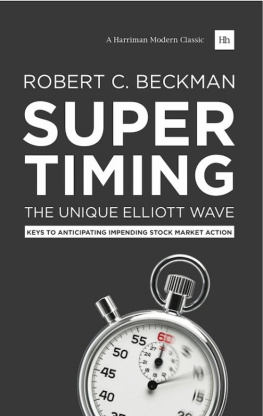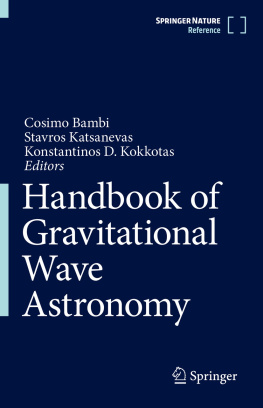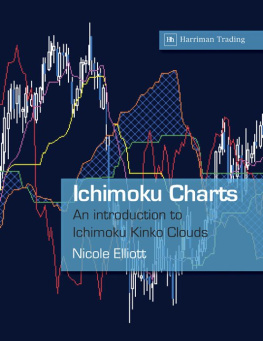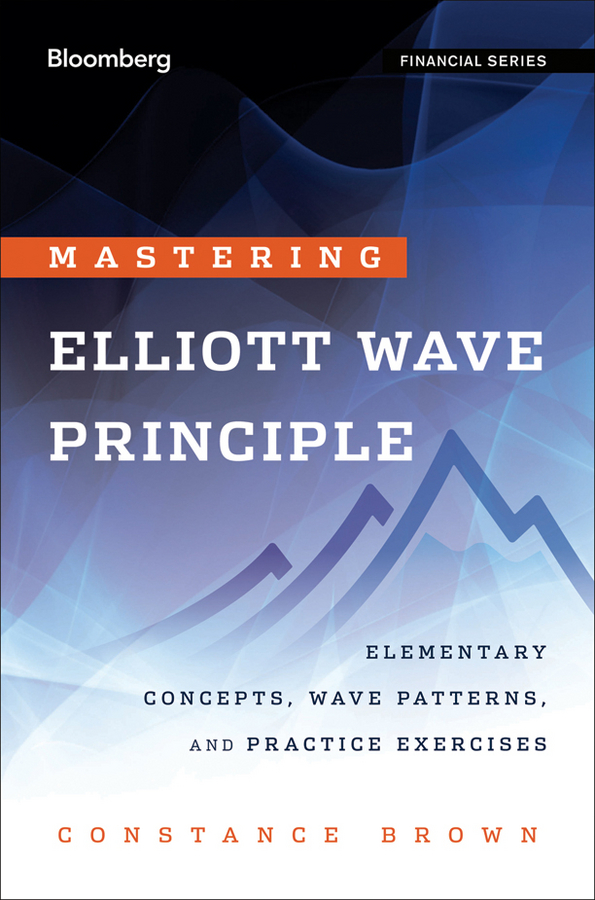Contents

Since 1996, Bloomberg Press has published books for financial professionals on investing, economics, and policy affecting investors. Titles are written by leading practitioners and authorities, and have been translated into more than 20 languages.
The Bloomberg Financial Series provides both core reference knowledge and actionable information for financial professionals. The books are written by experts familiar with the work flows, challenges, and demands of investment professionals who trade the markets, manage money, and analyze investments in their capacity of growing and protecting wealth, hedging risk, and generating revenue.
For a list of available titles, please visit our Web site at www.wiley.com/go/bloombergpress .
Books by Constance Brown
Aerodynamic Trading (1996)
All About Technical Analysis (2002)
The Illustrated Guide to Technical Analysis Signals and Phrases (2004, e-book only)
Technical Analysis Demystified: A Self-Teaching Guide (2007)
Breakthroughs in Technical Analysis: New Thinking from the Worlds Top Minds (2007, Edited by David Keller)
Fibonacci Analysis (2008)
Technical Analysis for the Trading Professional 2nd Edition (2011)
Mastering Elliott Wave Principle: Elementary Concepts, Wave Patterns, and Practice Exercises (2012)
Advanced Elliott Wave Analysis: Complex Patterns, Intermarket Relationships, and Global Cash Flow Analysis (to come)
Copyright 2012 by Constance Brown. All rights reserved.
Published by John Wiley & Sons, Inc., Hoboken, New Jersey.
Published simultaneously in Canada.
No part of this publication may be reproduced, stored in a retrieval system, or transmitted in any form or by any means, electronic, mechanical, photocopying, recording, scanning, or otherwise, except as permitted under Section 107 or 108 of the 1976 United States Copyright Act, without either the prior written permission of the Publisher, or authorization through payment of the appropriate per-copy fee to the Copyright Clearance Center, Inc., 222 Rosewood Drive, Danvers, MA 01923, (978) 750-8400, fax (978) 646-8600, or on the Web at www.copyright.com . Requests to the Publisher for permission should be addressed to the Permissions Department, John Wiley & Sons, Inc., 111 River Street, Hoboken, NJ 07030, (201) 748-6011, fax (201) 748-6008, or online at www.wiley.com/go/permissions .
Limit of Liability/Disclaimer of Warranty: While the publisher and author have used their best efforts in preparing this book, they make no representations or warranties with respect to the accuracy or completeness of the contents of this book and specifically disclaim any implied warranties of merchantability or fitness for a particular purpose. No warranty may be created or extended by sales representatives or written sales materials. The advice and strategies contained herein may not be suitable for your situation. You should consult with a professional where appropriate. Neither the publisher nor author shall be liable for any loss of profit or any other commercial damages, including but not limited to special, incidental, consequential, or other damages.
Charts by Market Analyst 6, Copyright 19962011.
Charts created using TradeStation TradeStation Technologies, Inc., 20012011. All rights reserved. No investment or trading advice, recommendation, or opinion is being given or intended.
Figure 5.7 Robert R. Prechter, Jr.
For general information on our other products and services or for technical support, please contact our Customer Care Department within the United States at (800) 762-2974, outside the United States at (317) 572-3993 or fax (317) 572-4002.
Wiley also publishes its books in a variety of electronic formats. Some content that appears in print may not be available in electronic books. For more information about Wiley products, visit our web site at www.wiley.com .
Library of Congress Cataloging-in-Publication Data:
Brown, Constance M.
Mastering elliott wave principle : elementary concepts, wave patterns, and practice exercises / Constance Brown.
p. cm. (Bloomberg financial series)
Includes index.
ISBN 978-0-470-92353-5 (cloth); 978-1-118-23515-7 (ebk); 978-1-118-22130-3 (ebk); 978-1-118-25977-1 (ebk)
1. Elliott wave principle. 2. Speculation. 3. Stocks. I. Title.
HG6041.B748 2012
332.63'2042dc23
2011046138
An ocean travelerhas even more vividly the impression that the ocean is made of waves than that it is made of water.
Sir Arthur Stanley Eddington in a lecture at the University of Edinburgh, March 1927
Acknowledgments
I would like to express my sincere appreciation to the team at John Wiley & Sons: Kevin Commins, Meg Freeborn, and Stacey Fischkelta. The subject of the Elliott Wave Principle presents several unique challenges. The fractal nature of the method carries a message in charts that reflects on the bigger picture of the market in discussion. Therefore timing was an issue for the manuscript. I would also like to acknowledge and thank the efforts of the creative team.
There is no topic more difficult to edit as a number within a chart could mean a point to help focus the readers attention, or it could be a critical number within a larger wave interpretation. The editorial team has helped us all by allowing me to use quote marks to define the start and end of wave notations. In practice this has helped my followers find it a little easier to read the unique dialog that develops within the analysis of wave patterns.
A special acknowledgment must be given to Robert Prechter, Jr., who saved this analysis method from obscurity. The work of R.N. Elliott might have been lost had it not been for his efforts. I once analyzed the S&P 500 market throughout the trading day before a real-time global audience for Elliott Wave International. It was the last step I needed to build my confidence that I could step out on my own and start my own company and Hedge Fund in 1996.
I cannot let it be unsaid that all eight of my books can be traced back to the confidence and guidance of Stephen Isaacs with Bloomberg Press. My loyalty to him explains the multiple publishers I have worked with over the years.
Introduction
After 20 years of experience helping other traders become more confident in how they apply the Elliott Wave Principle, I know how difficult it can be for many people. But over the years these people have helped me evolve my way of teaching this subject so that even the most challenged may finally see markets move in repeating fractal price patterns.
Why This Teaching Approach Is Different
We have failed to help you understand that price swings and Elliott Waves are not the same thing. Everyone begins with counting price swings since these are the easiest to understand, but the final result is disastrous. Why? You learn to ignore the internal construction of a price swing and overlook the rules that are intellectually understood, but then incorrectly applied. It is such a widespread problem that it merits the effort to try something new to explain these concepts.
Though our words are carefully chosen to match impeccable market charts, we have failed to really test your understanding by having you stop your reading at critical points to challenge your understanding. This is one subject that must offer ways for you to check your progress in small incremental steps before the learning curve becomes hopelessly entangled. Many traders on professional desks have told me they wish they had a way to test their understanding. Then they want to compare their errors with a detailed description of where they likely stepped off course. So often I see people correctly verbalize a rule or correctly identify and name an isolated pattern, only to then fail miserably five minutes later when asked to identify it in the context of a market chart. It is clear that my mission must include helping you bridge this gap. There will be numerous personal tests to ensure you are ready to move forward. I also have a method of drawing boxes to help you understand how connections develop within trends and corrections.












